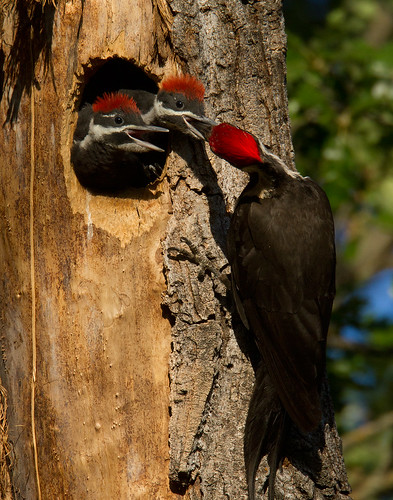An estimated 4,000 people in the San Francisco Bay Area recently celebrated the return of millions of migrating birds as part of the 16th annual Flyway Festival held on Mare Island in Vallejo, Calif. California national forests act as a vital habitat link in the Pacific Flyway, a major north-south route of travel for birds migrating every year from Alaska to Patagonia.

The birds travel some or all of this distance both in the spring and in the fall, following food sources heading to breeding grounds overwintering sites. Many of the bird’s native habitats such as oak woodlands, riparian areas and mixed conifer forests are found in the golden state’s national forests.
“Our forests provide habitats for many forest and riparian-associated species,” said Sam Cuenca, a wildlife biologist on the Klamath National Forest and the Pacific Southwest Region’s NatureWatch Coordinator. “The Flyway Festival gives visitors an enjoyable opportunity to discover the diversity of bird watching opportunities on California’s national forests.”
Visitors to the Butte Valley Grasslands on the Klamath National Forest can see a variety of bird species including bald eagles and red-tailed and Swainson’s hawk and Brewer’s sparrow in the spring, summer and fall. Resident bird species include the horned lark and lark sparrow.

On the Oak Flat Lookout on the Sequoia National Forest, visitors can camp out on the 4,900-foot historic tower overlooking the Kern River and watch bald eagles, golden eagles, Swainson’s hawks, prairie falcons, and red-tailed hawks soar on thermal updrafts. A search among the black and live oaks offers California quail and band-tailed pigeons. The surrounding oak woodlands are also home to mountain chickadees, plain titmice, California thrashers, and acorn woodpeckers.
Visitors to the McCloud River Loop on the Shasta Trinity National Forest can see resident riparian-associated birds like the belted kingfisher and the American dipper. The willow flycatcher, pileated woodpecker, yellow-breasted chat, mountain bluebirds, and a myriad of neotropical migrant songbirds inhabit the willows at Bigelow Meadow on the forest. There is a high probability of seeing a rich diversity of songbirds in spring and fall. Look for birds of prey in spring and summer.
For other California bird watching opportunities including more than 400 types of birds, visit this California Watchable Wildlife link. And each year in May, forests across the state host International Migratory Bird Day events which include birding festivals, field trips, and conservation education activities.

